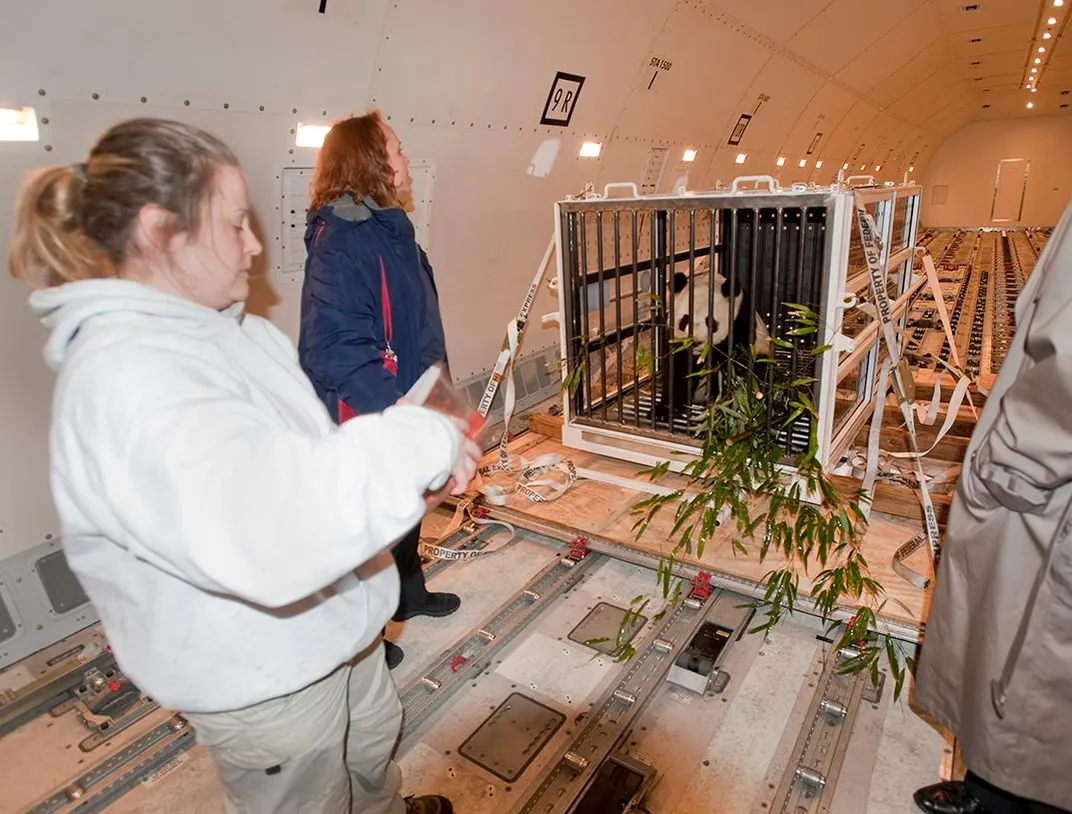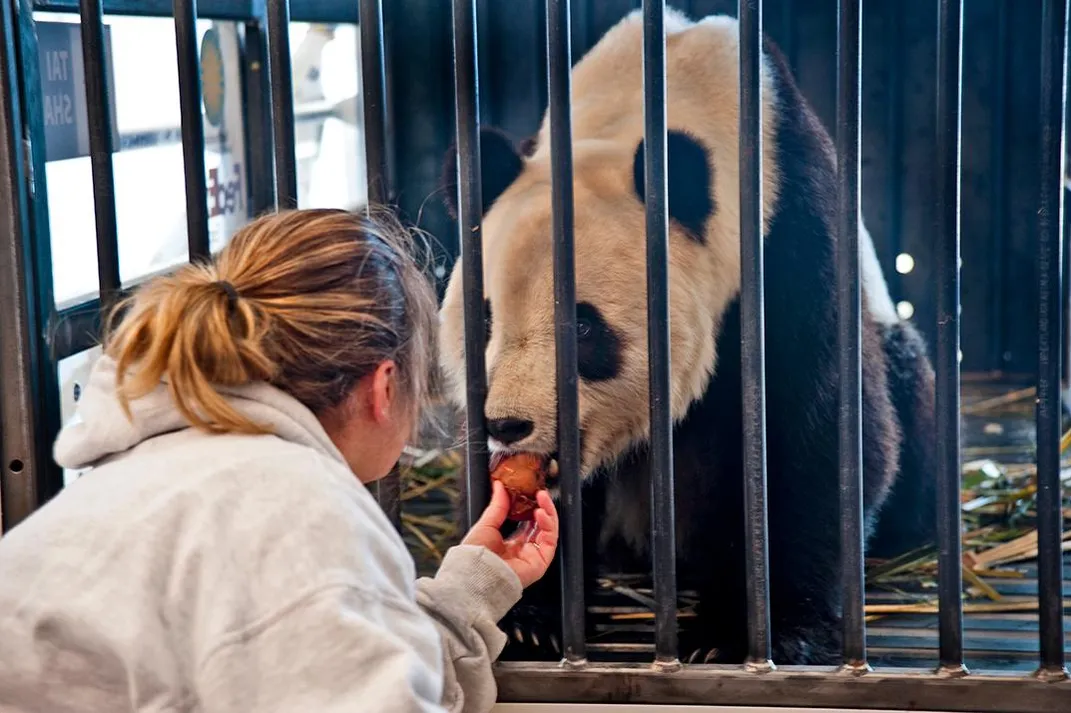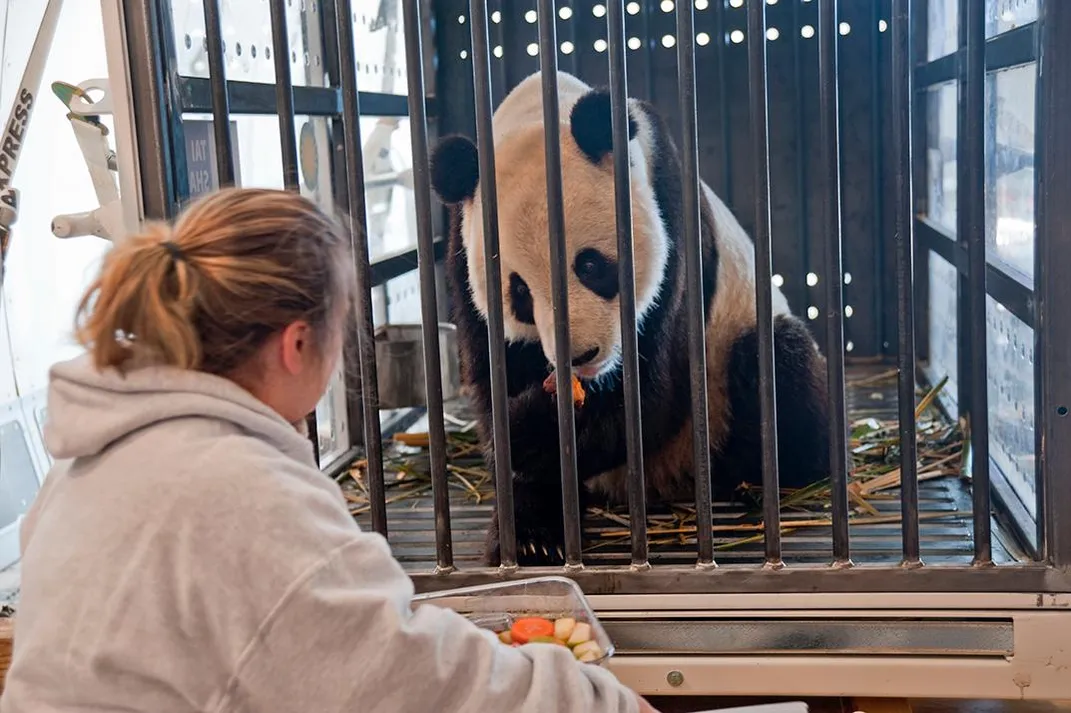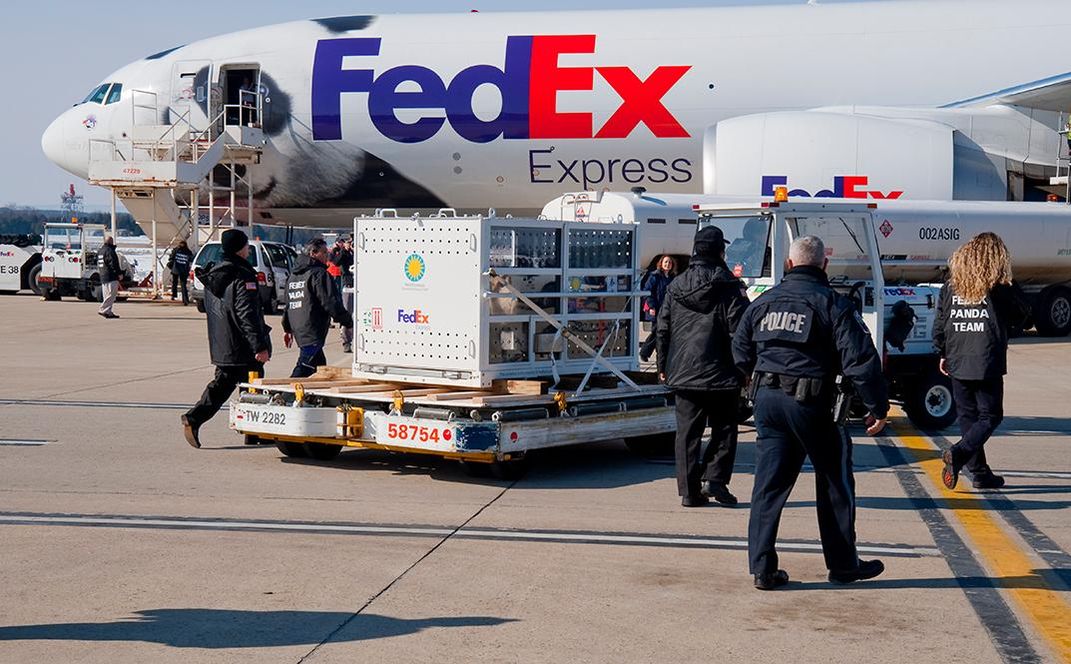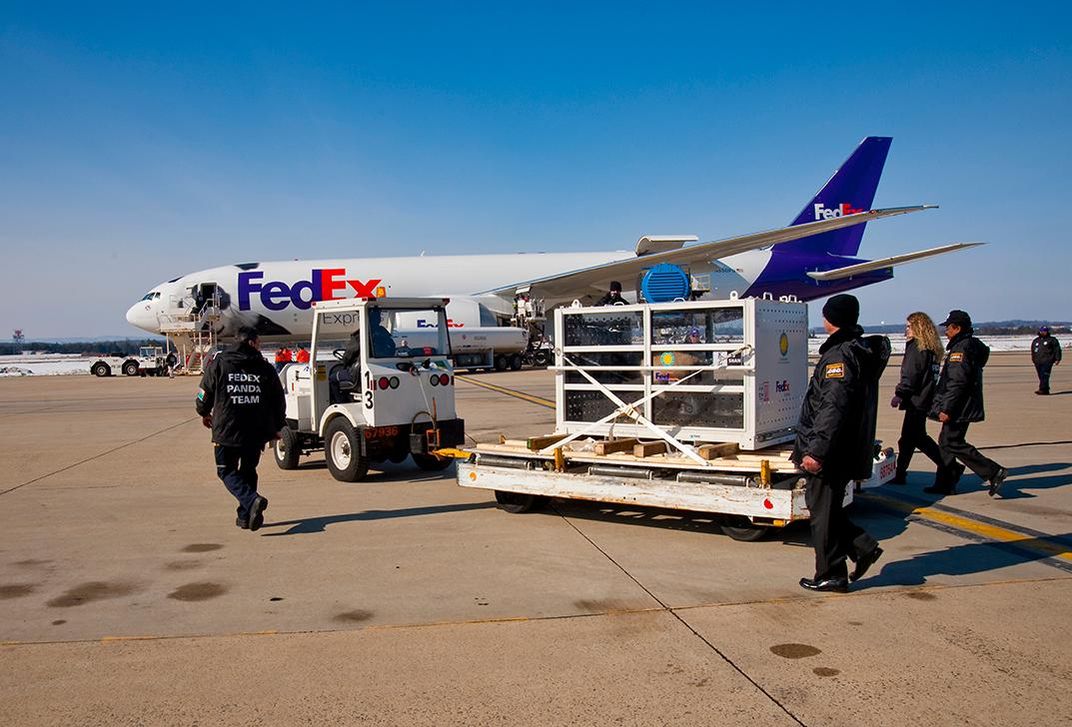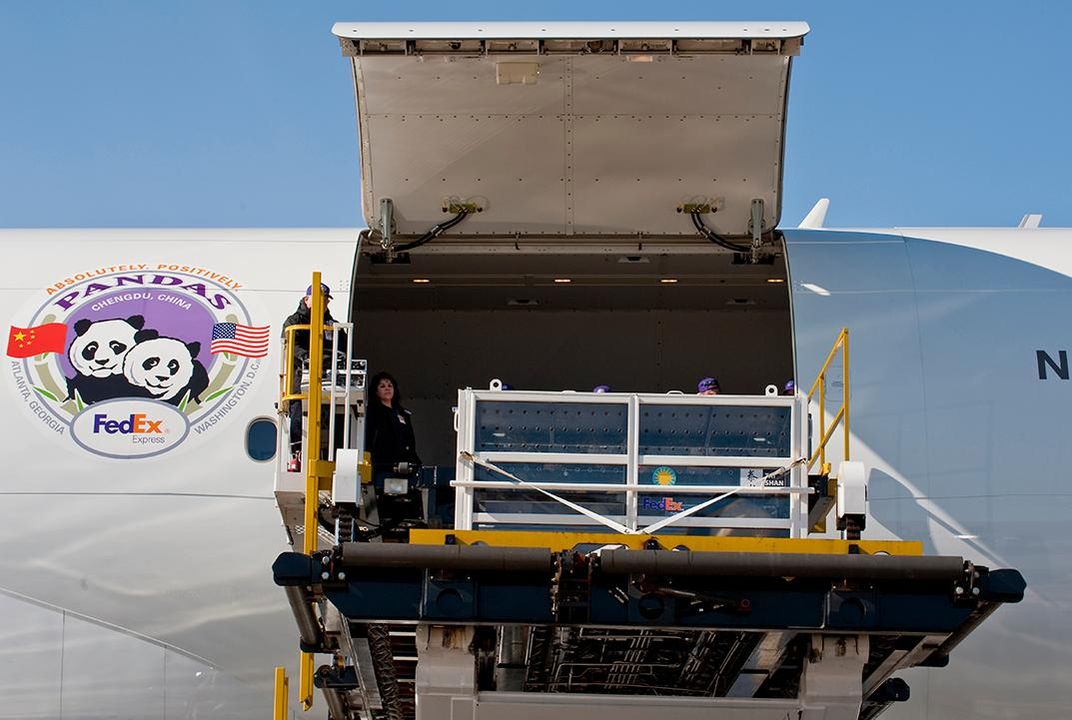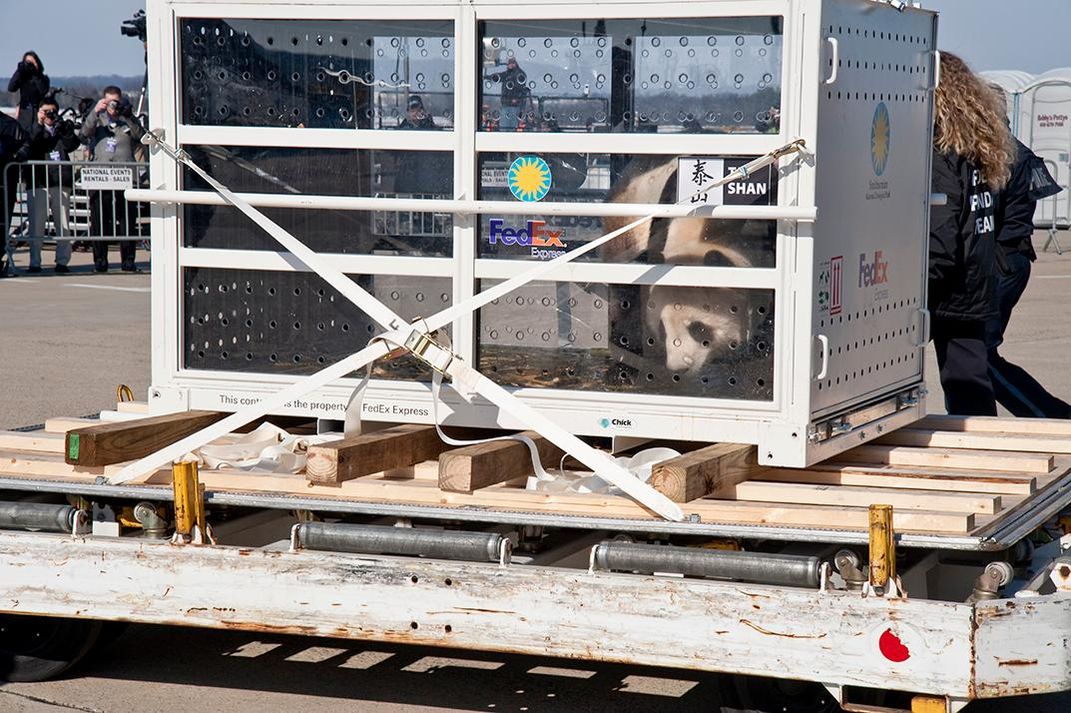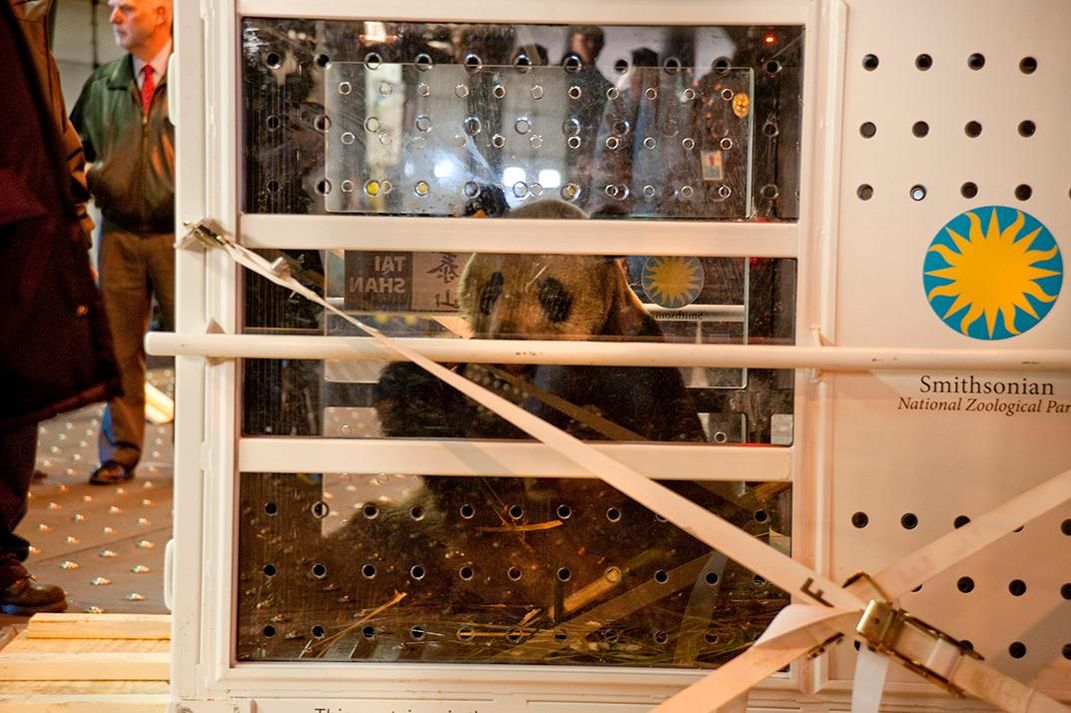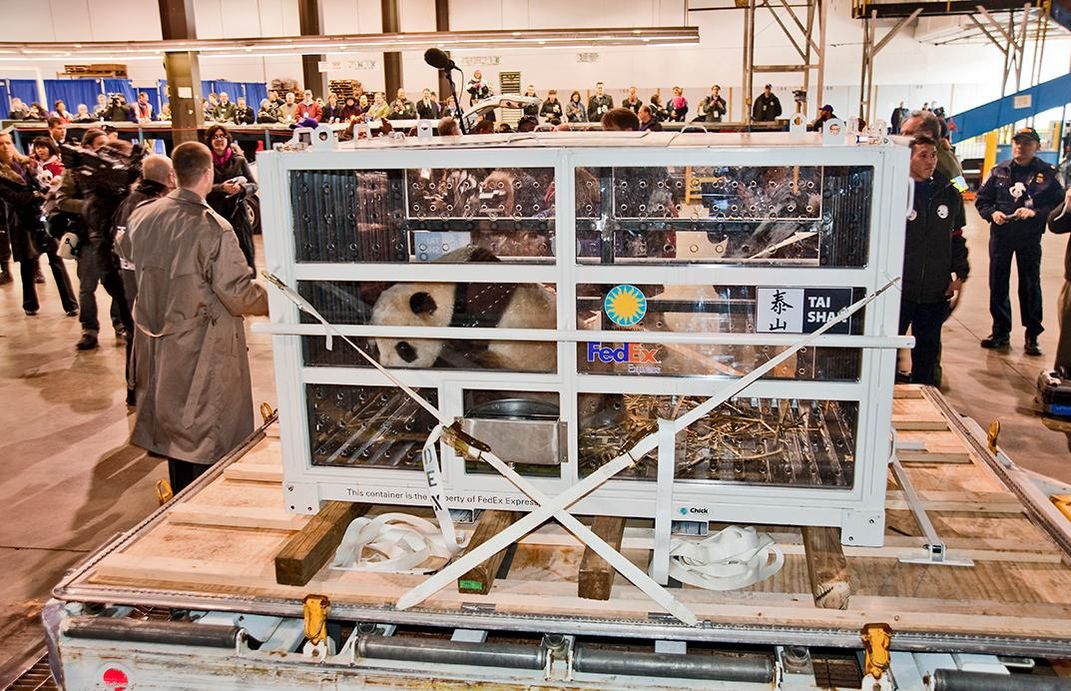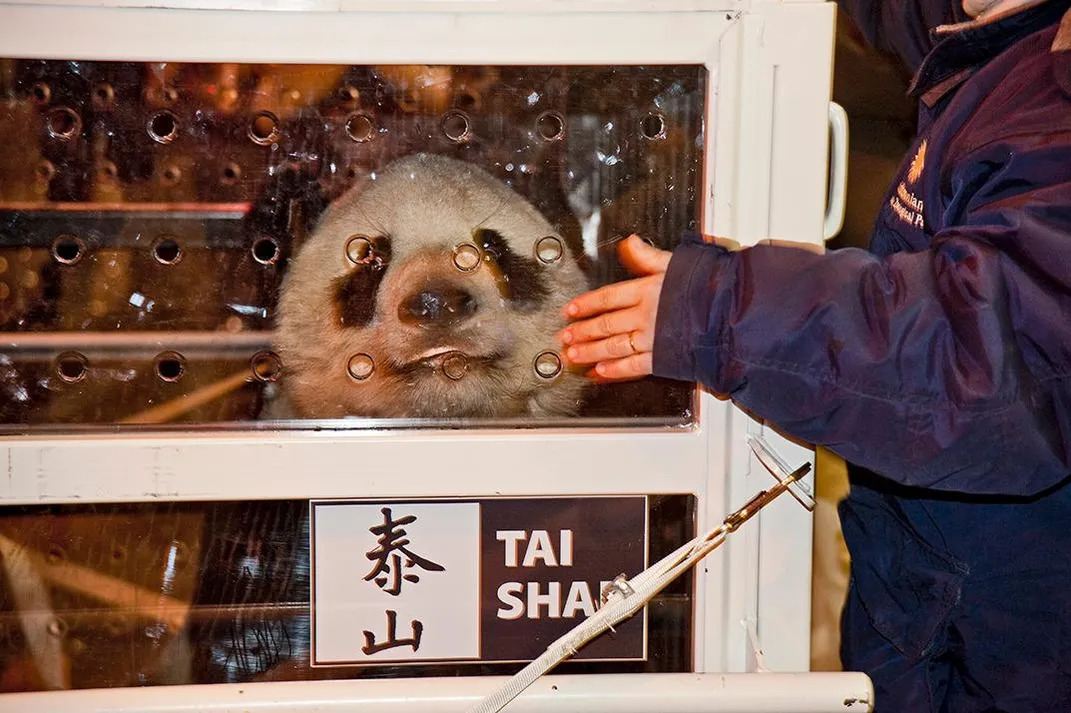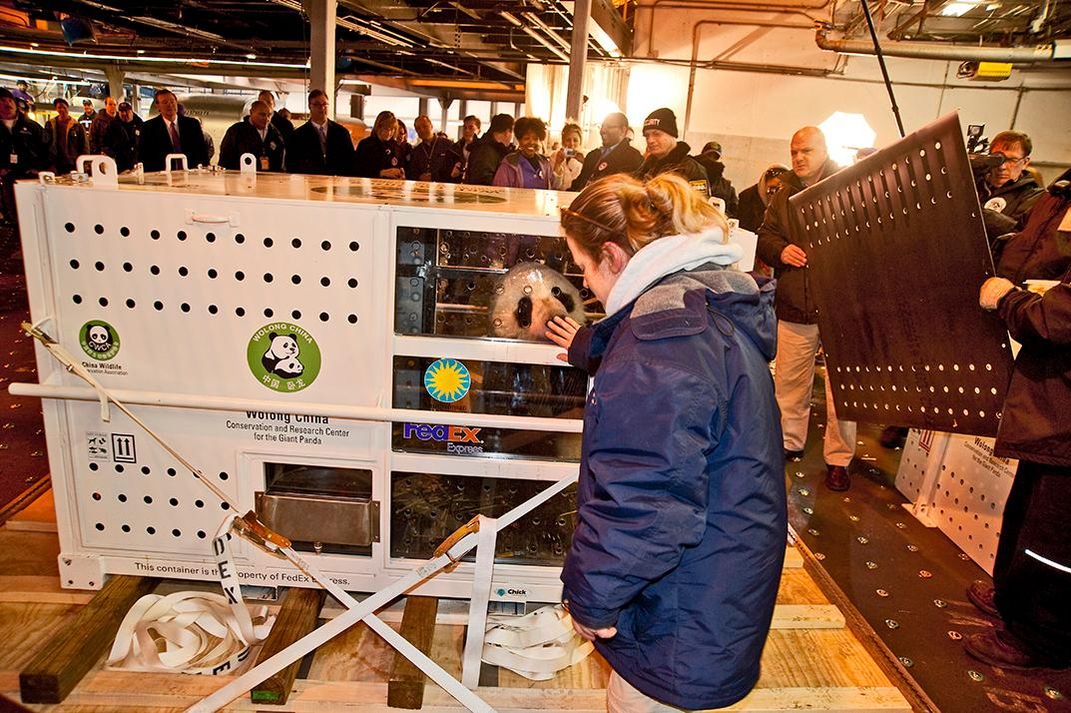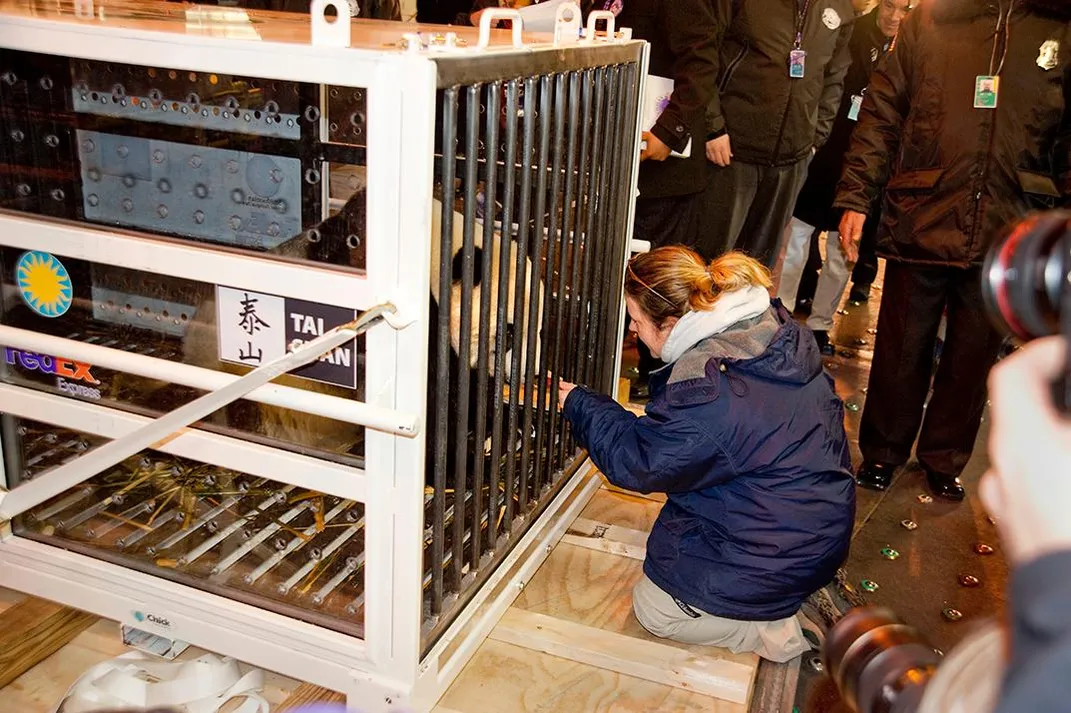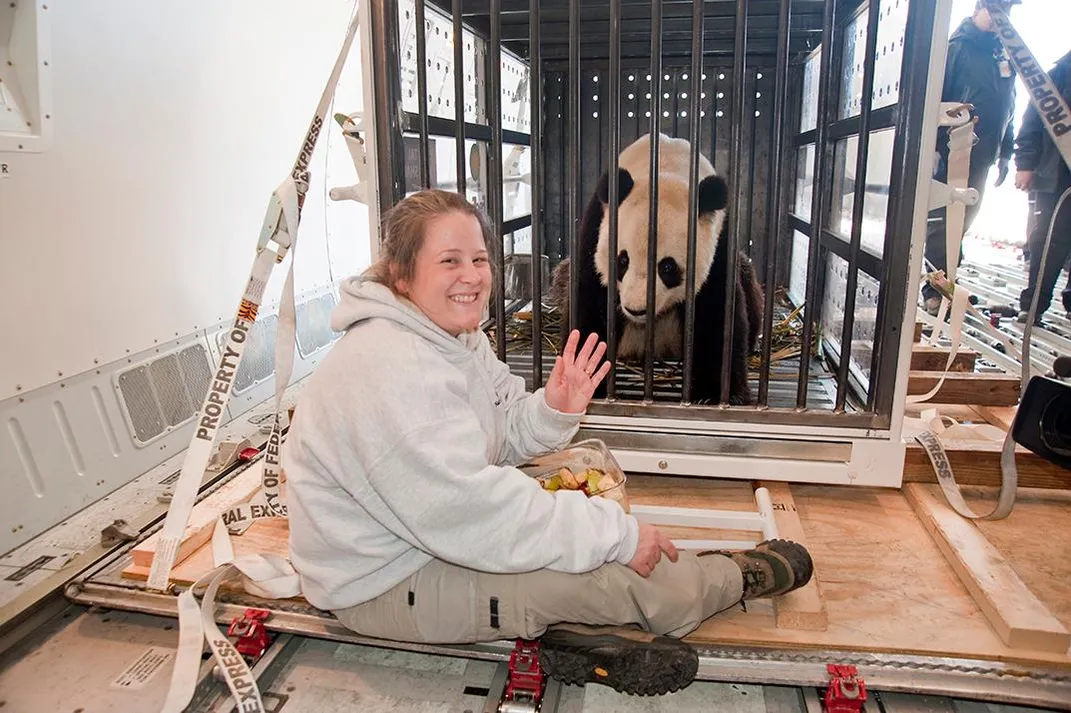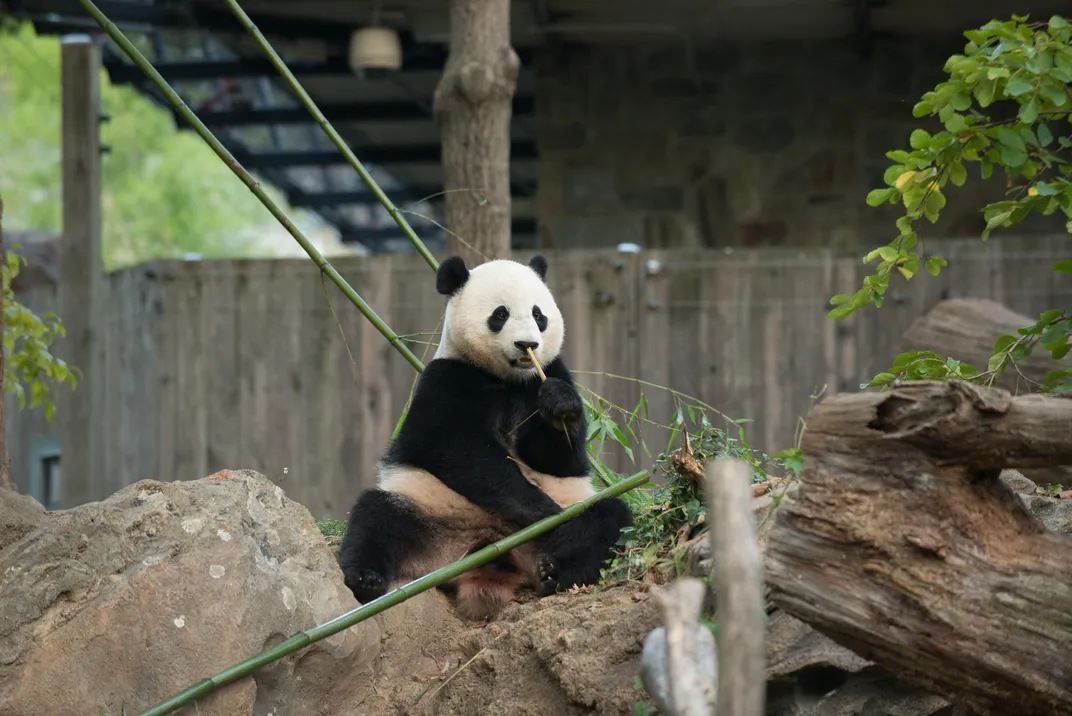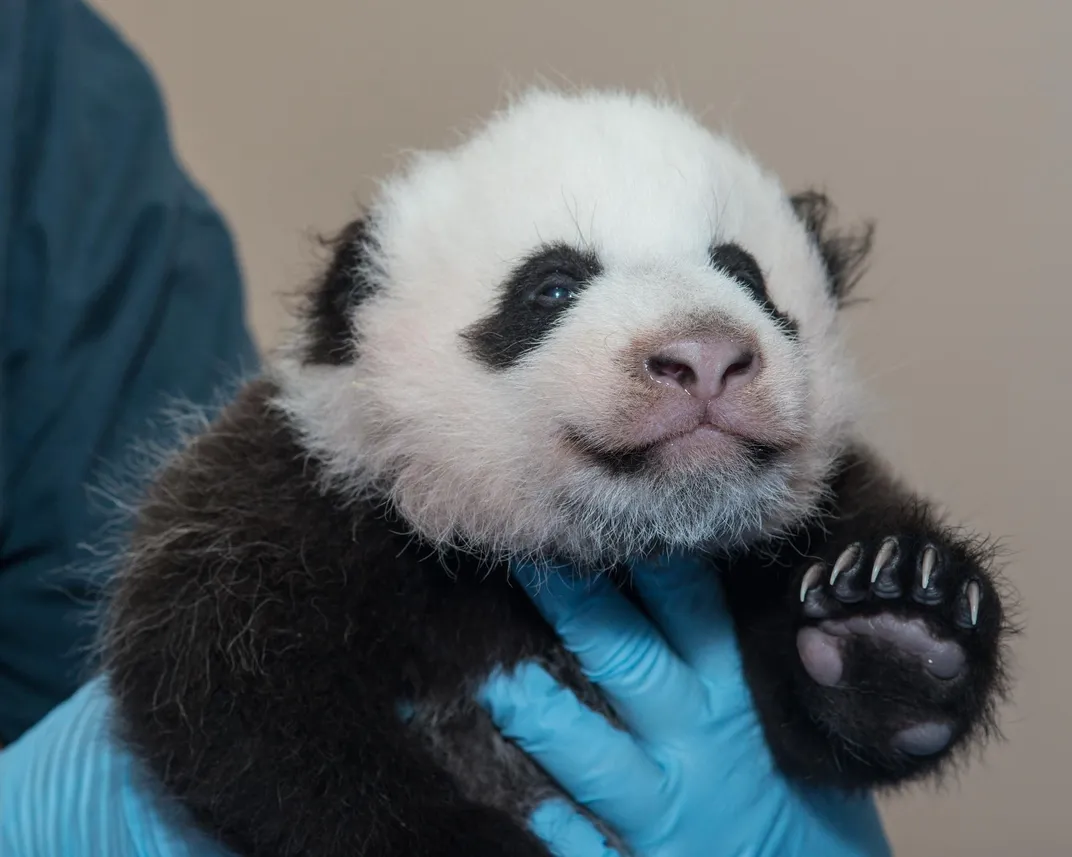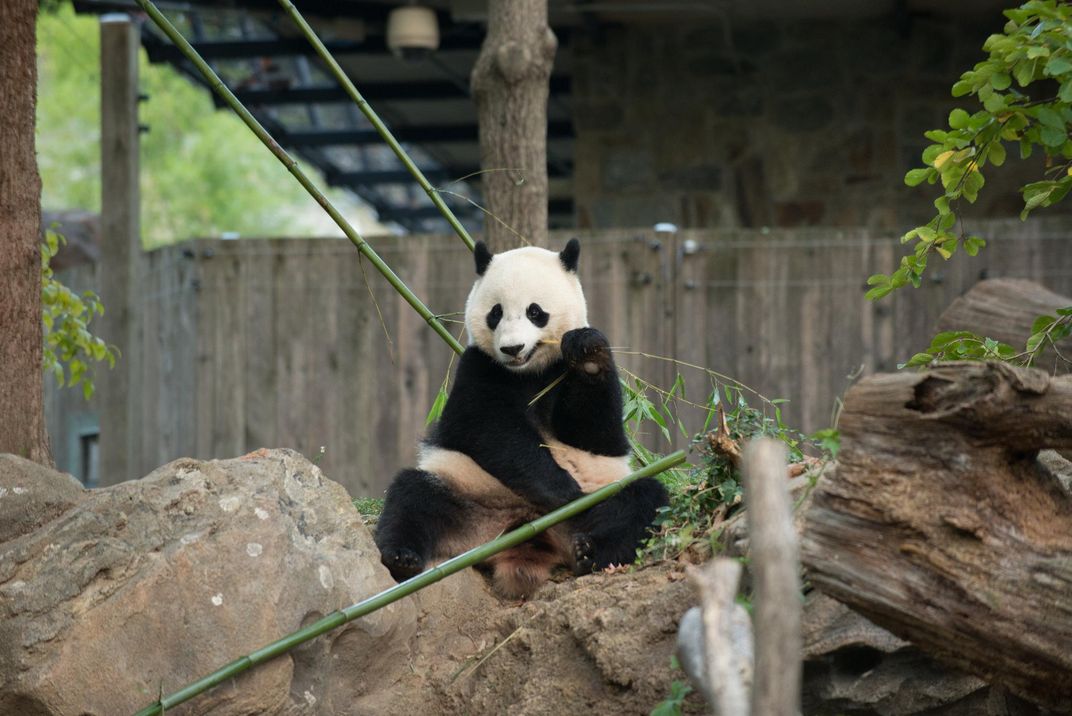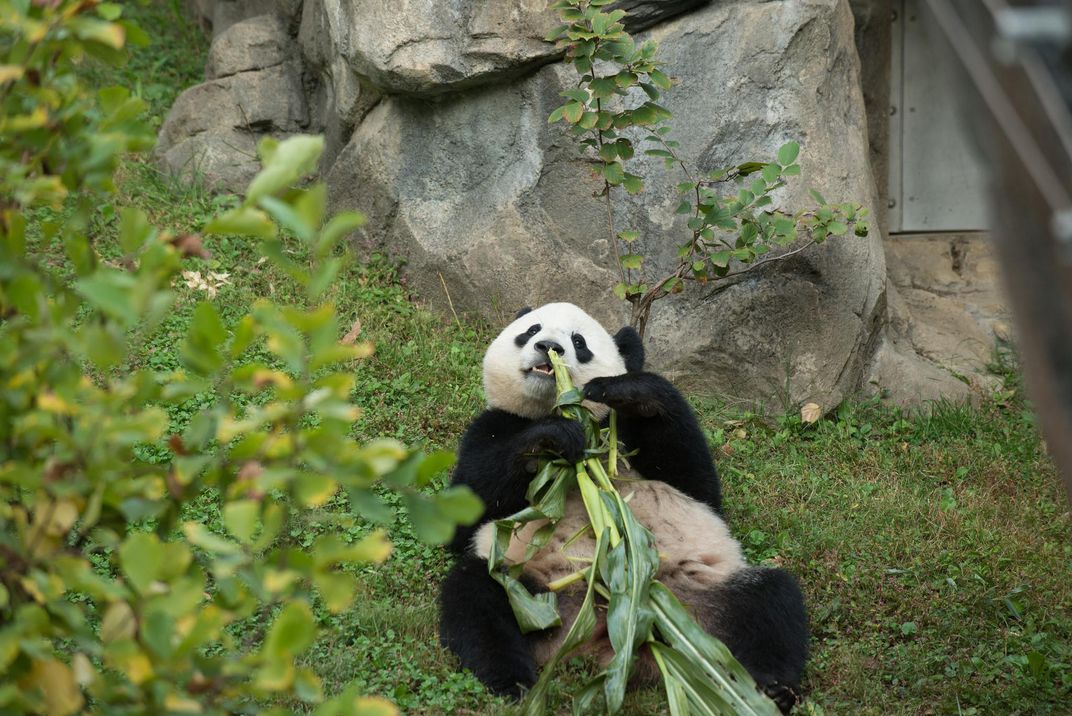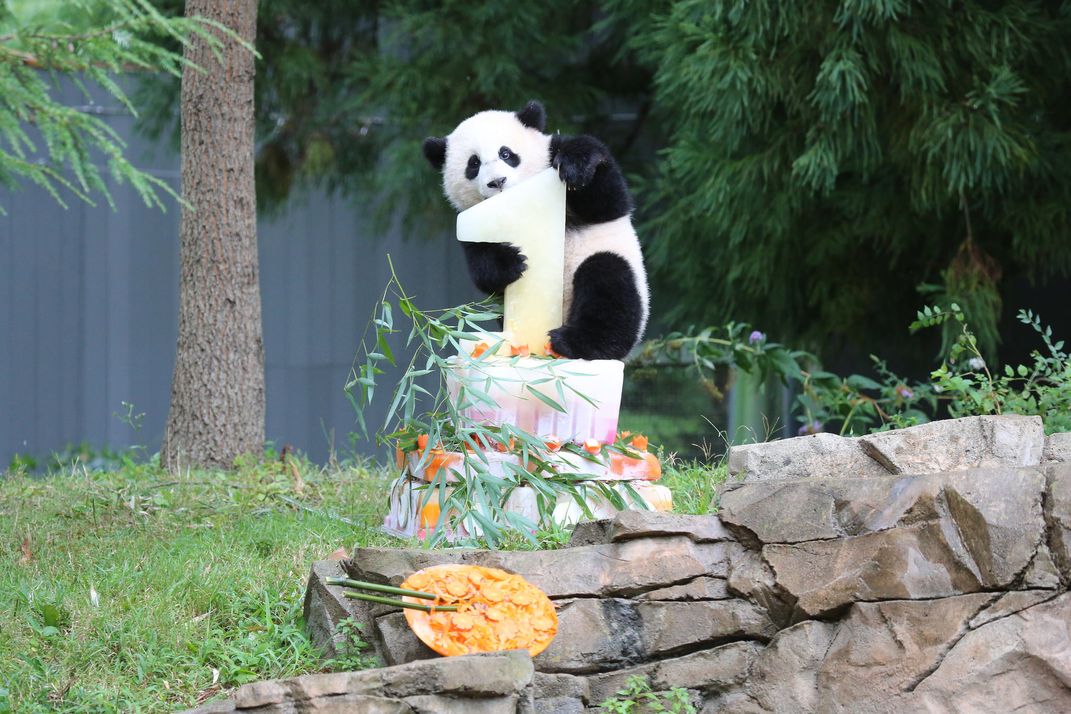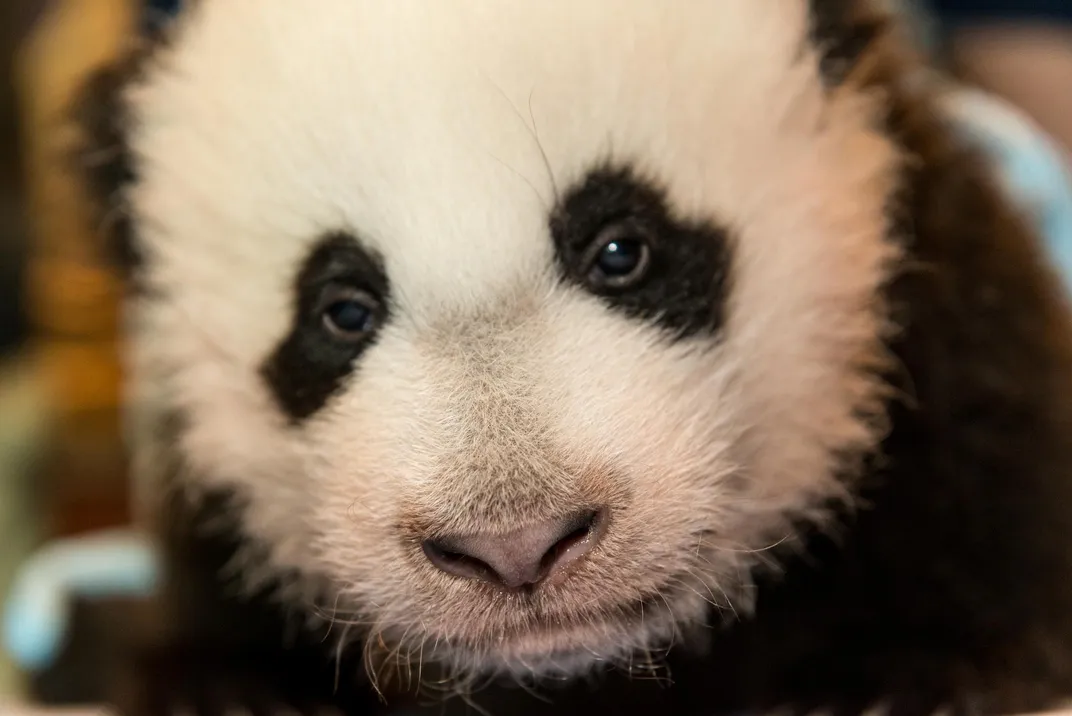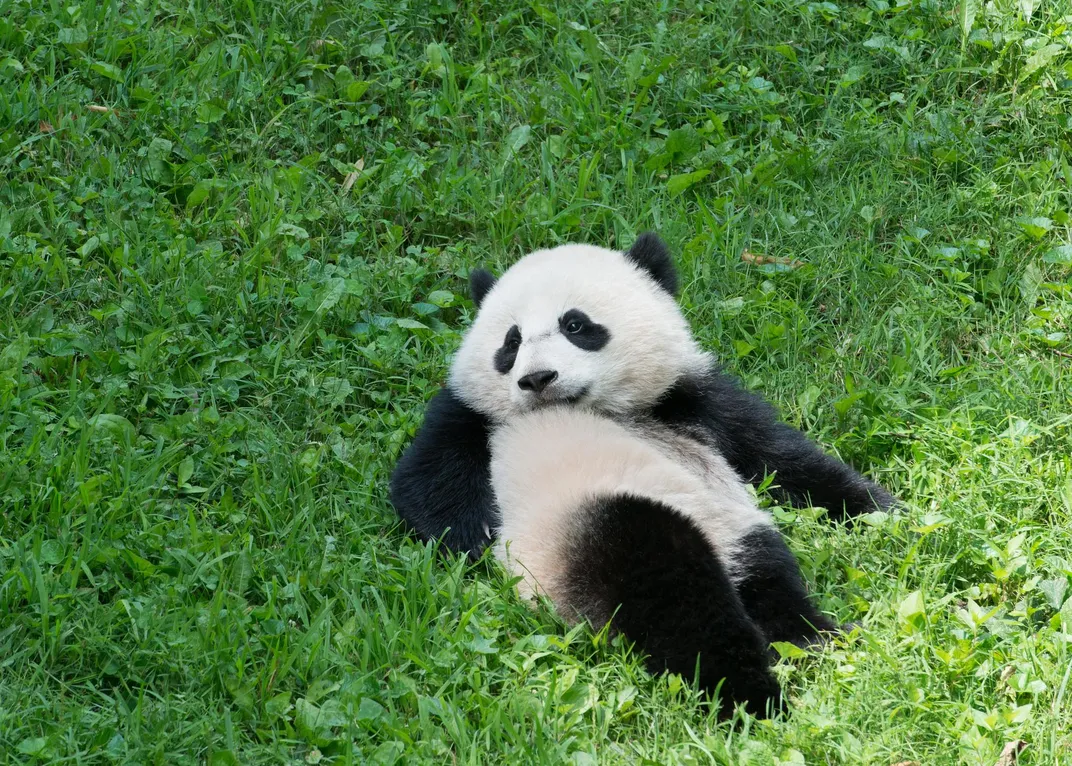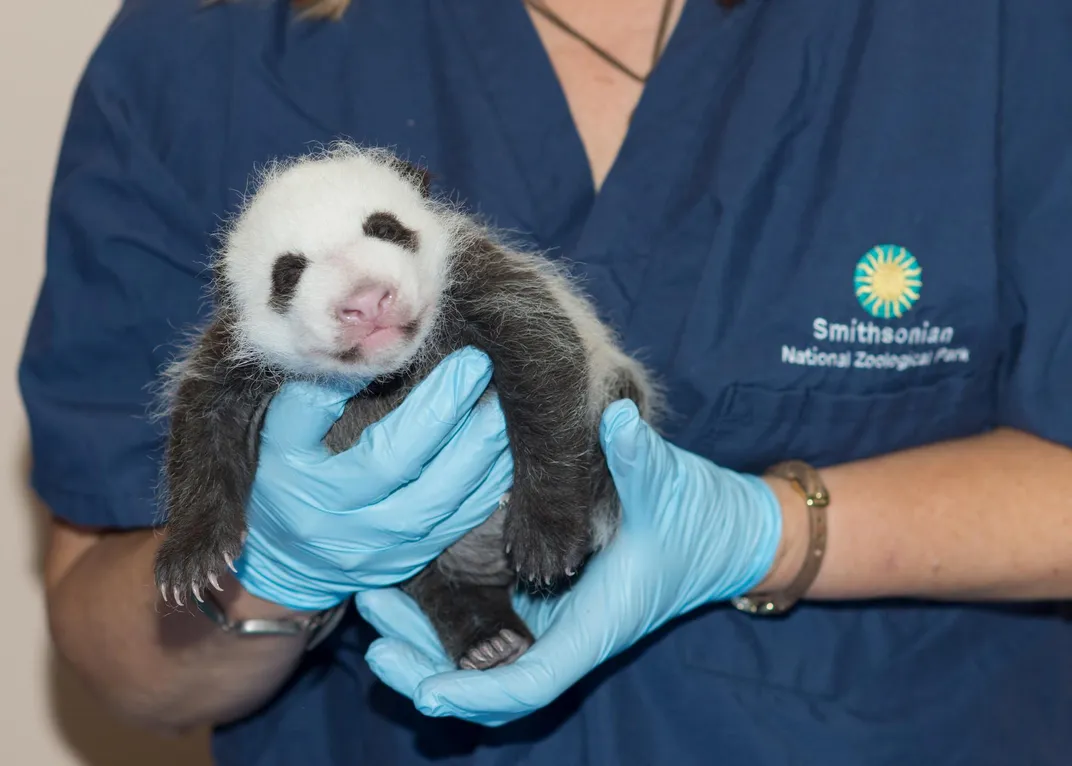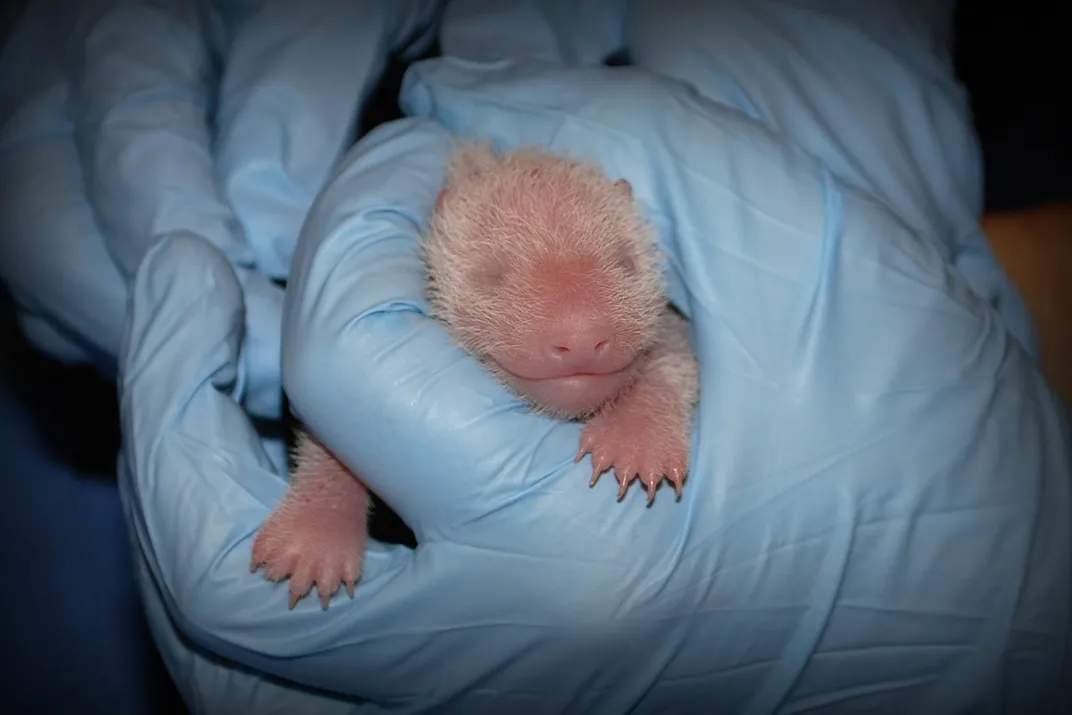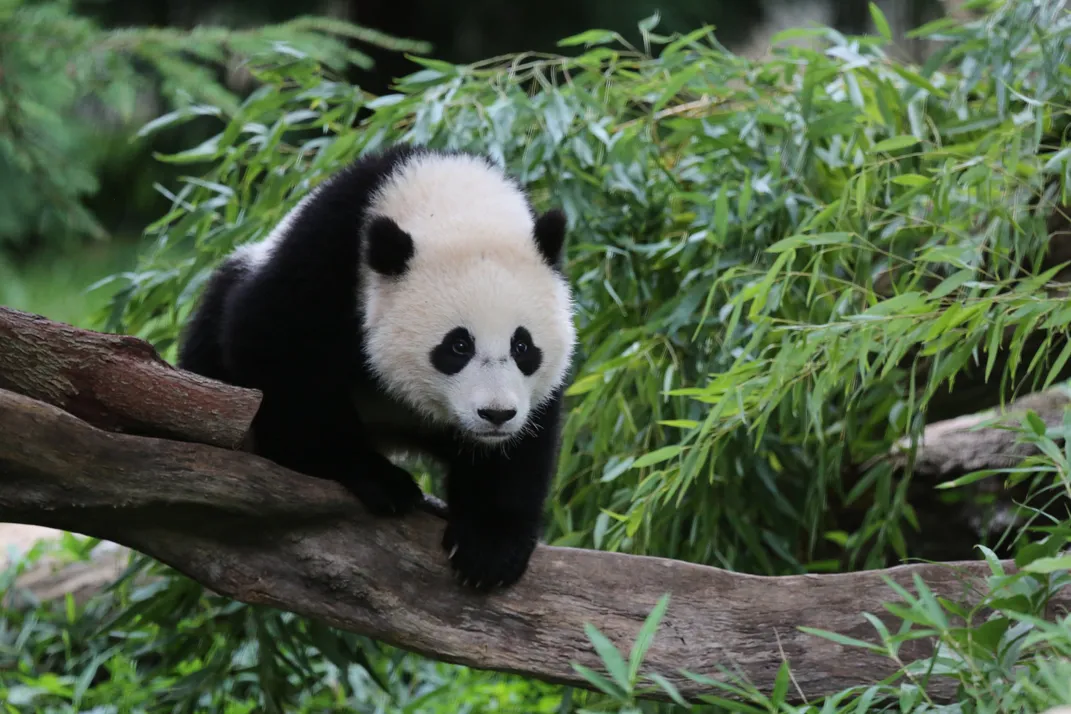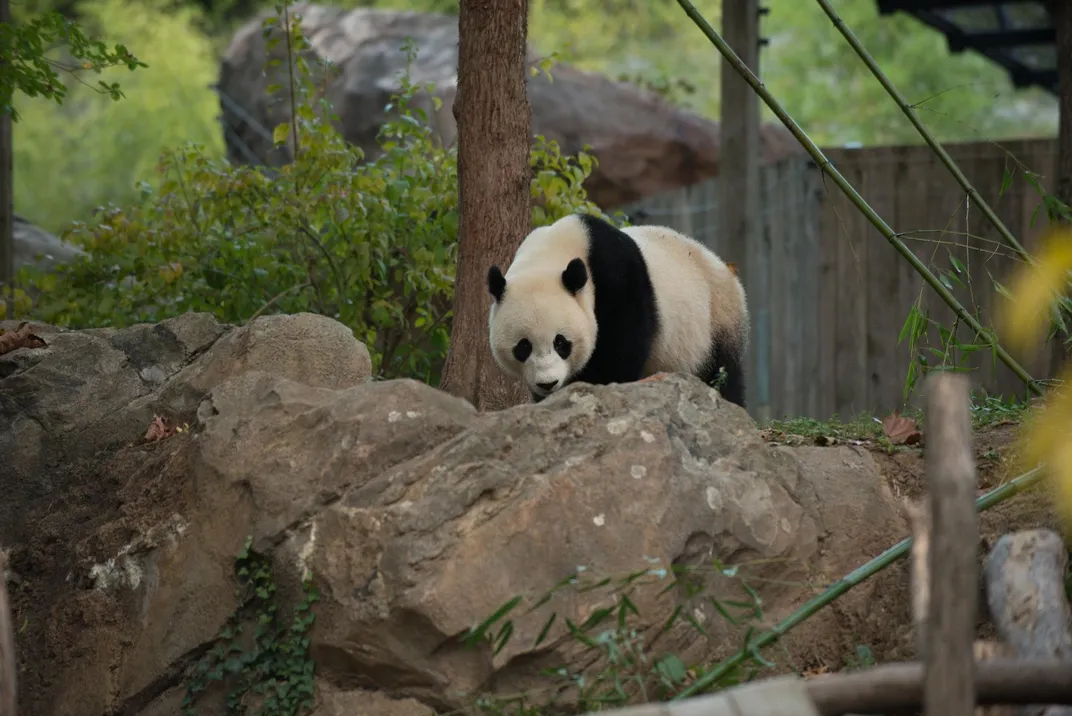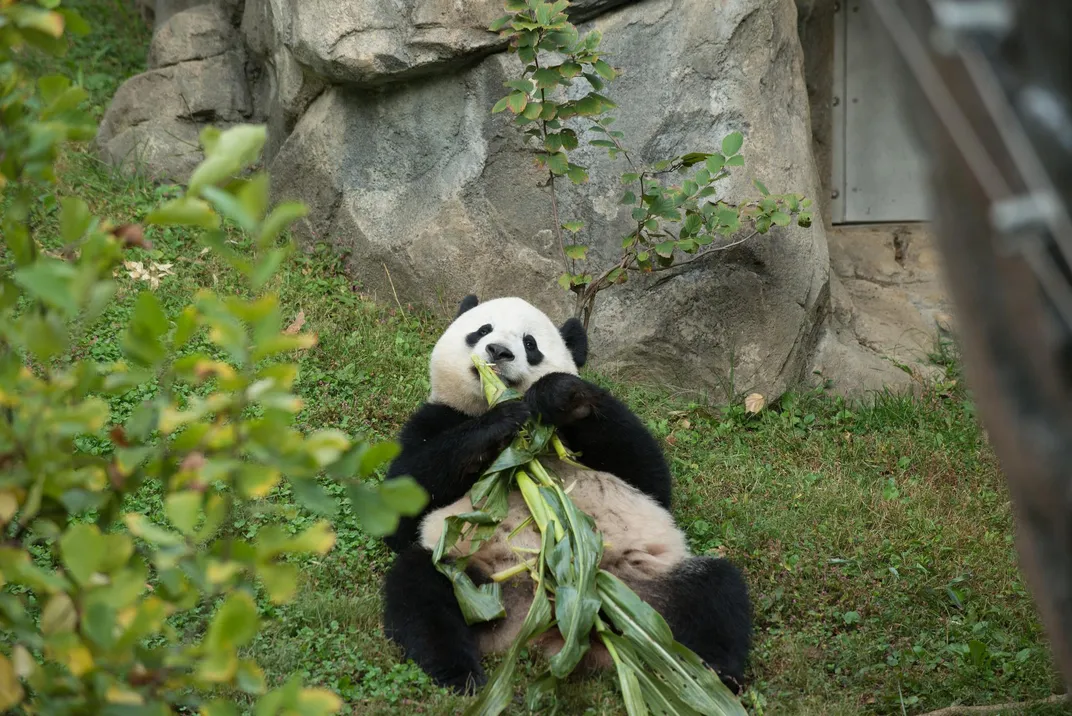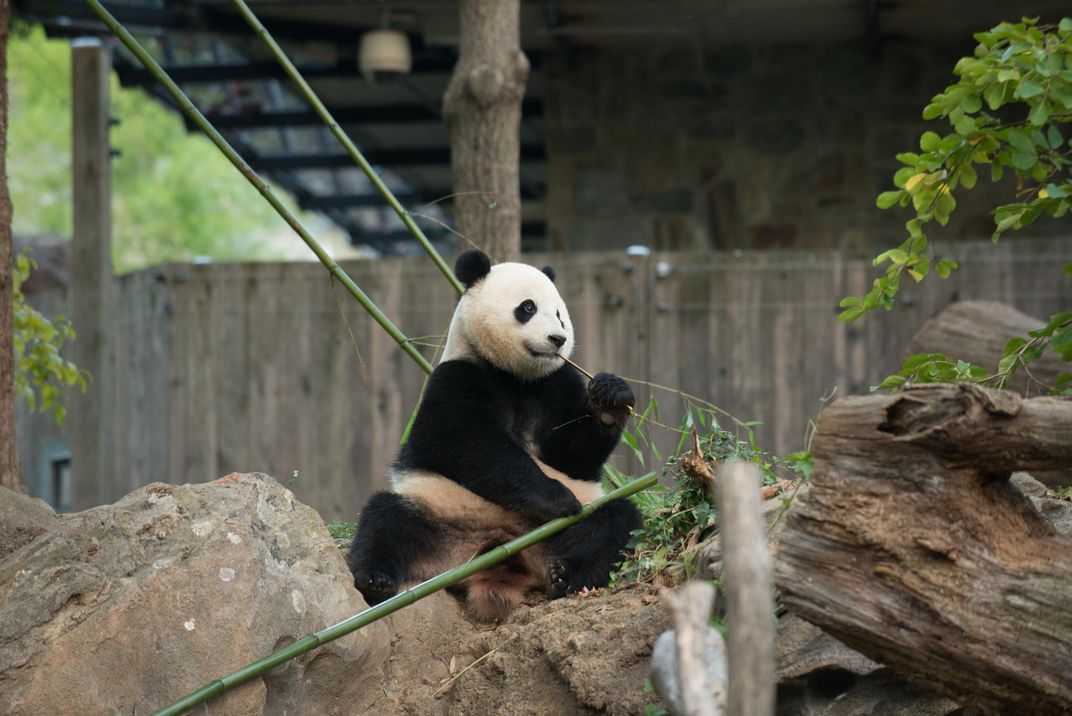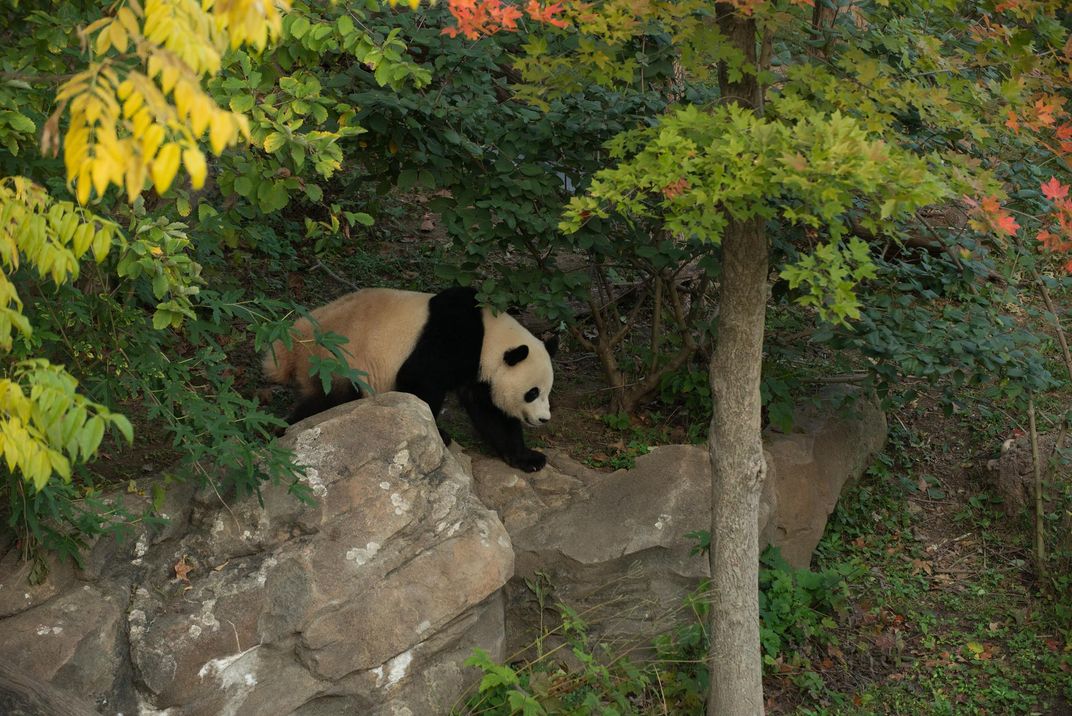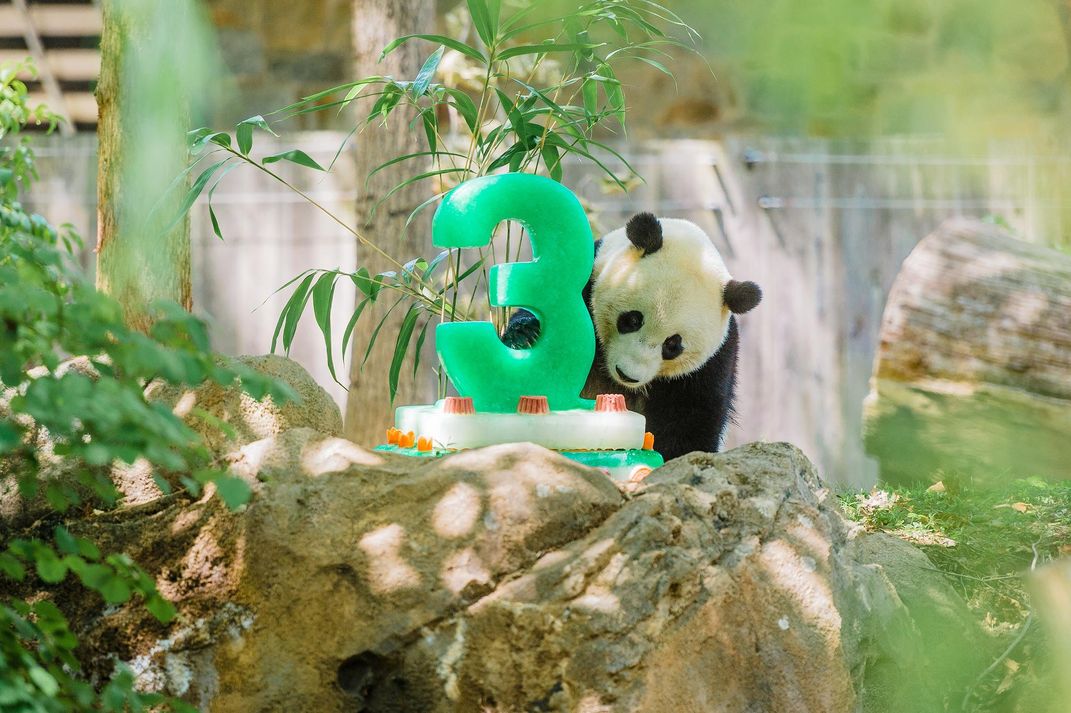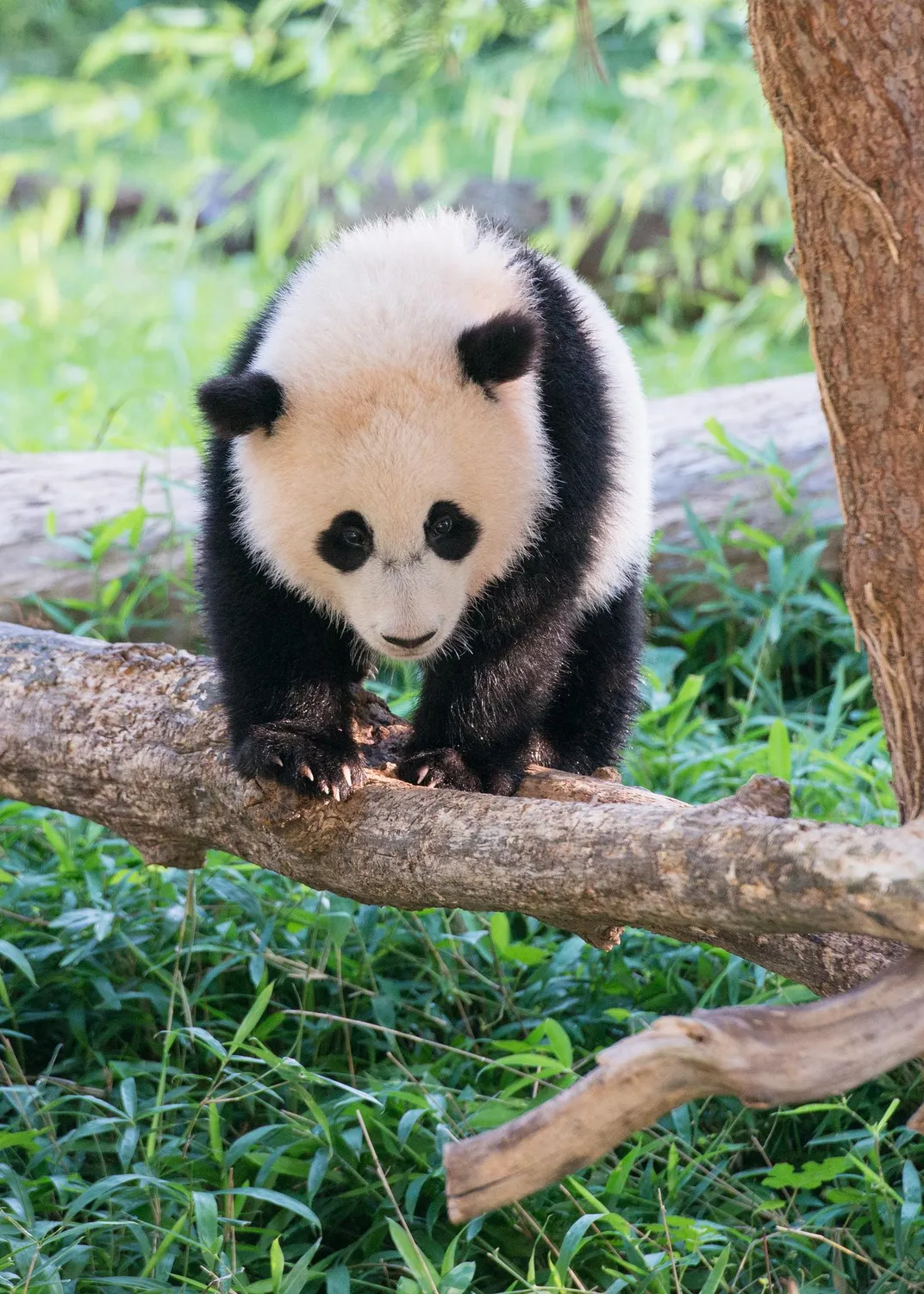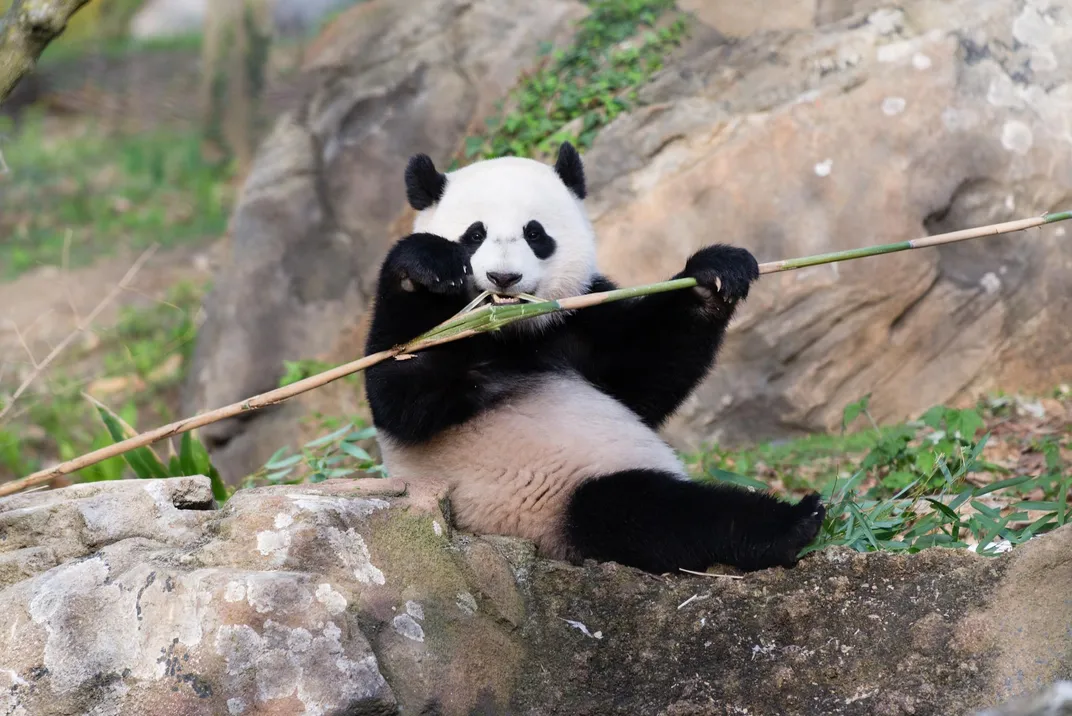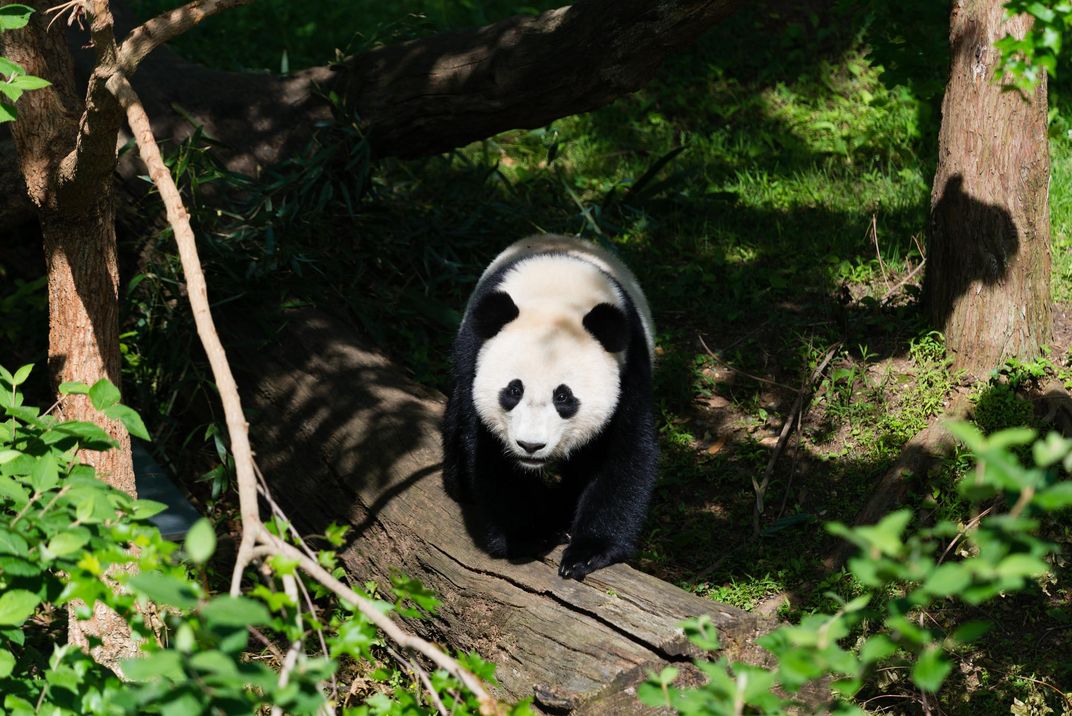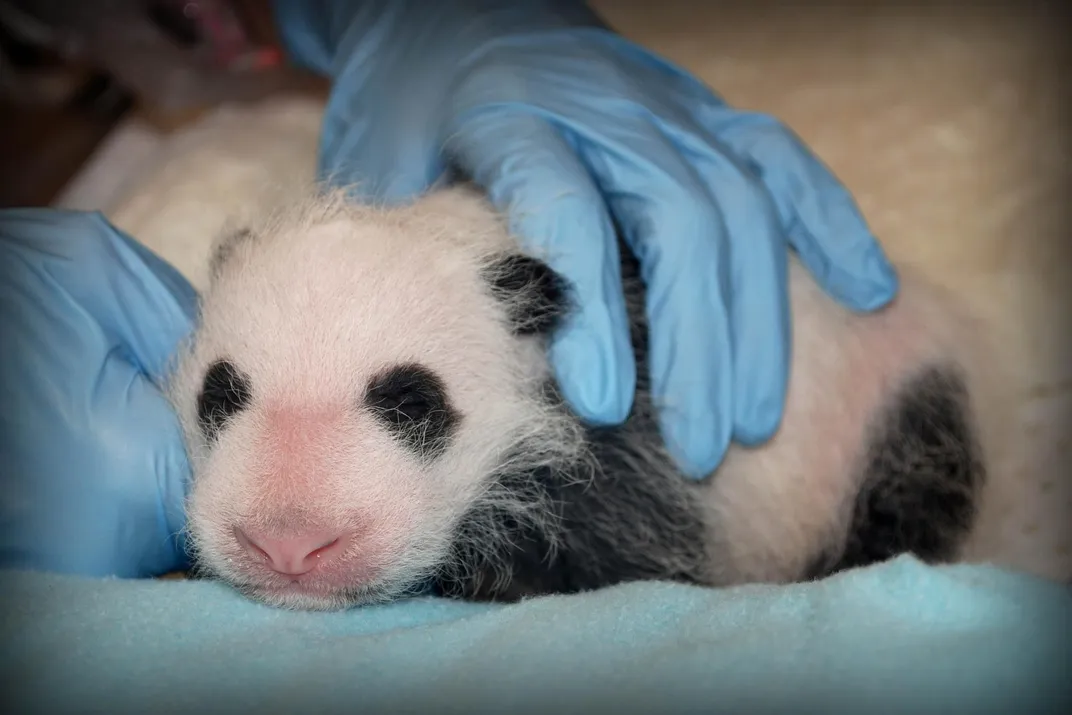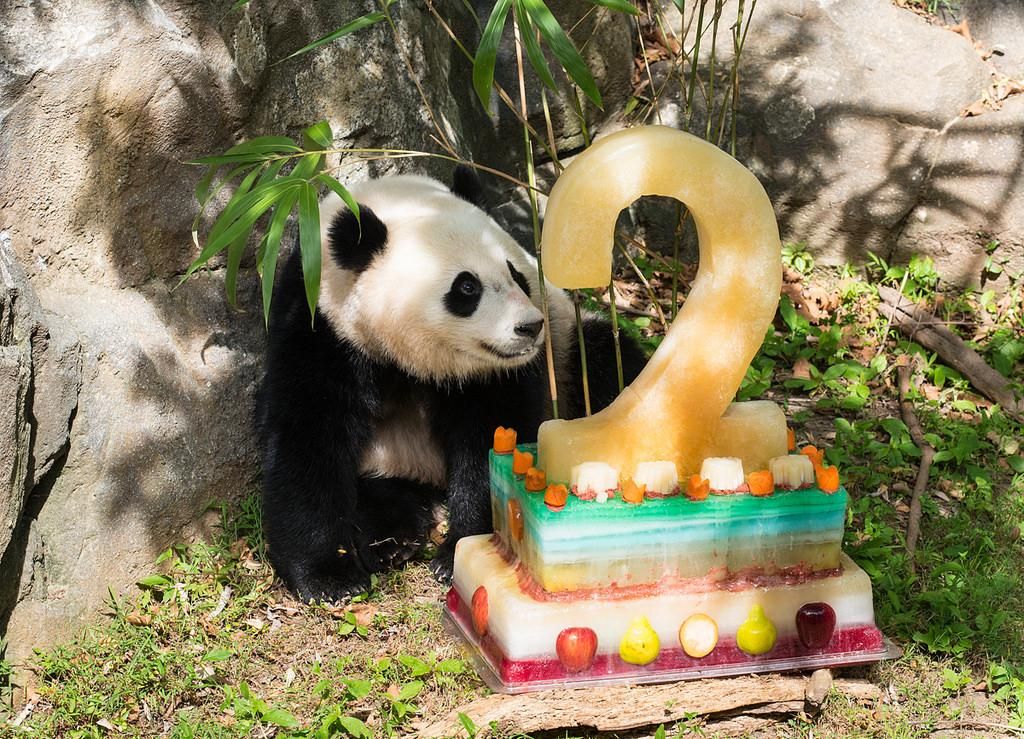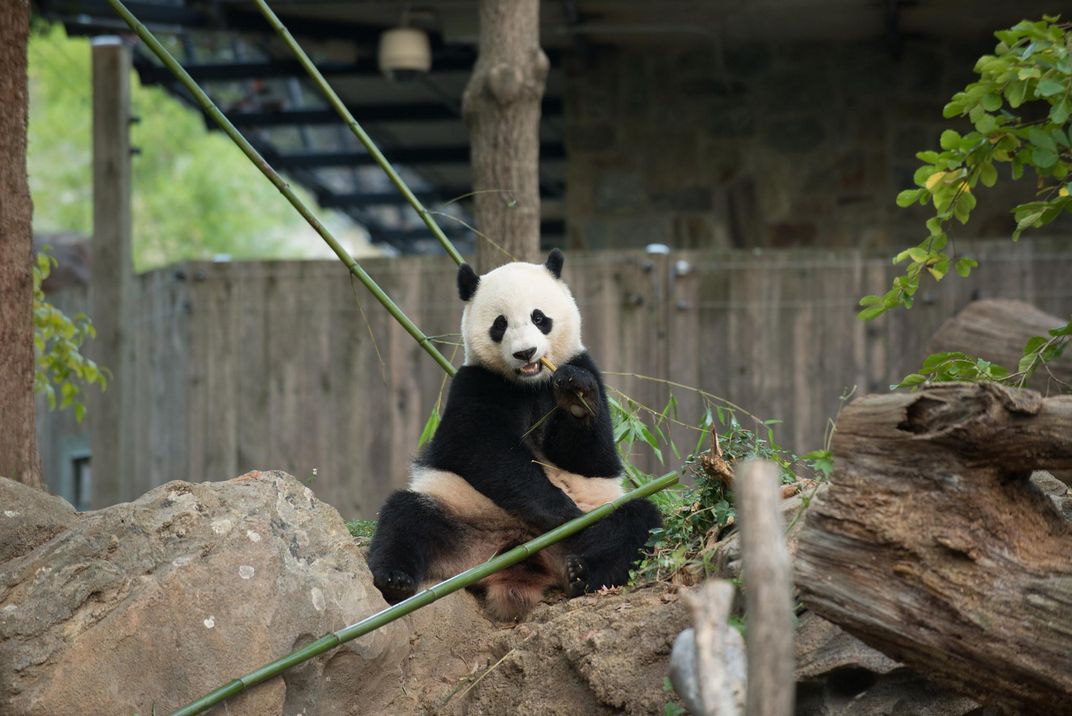How to FedEx a Giant Panda
On February 21, the United States says #ByeByeBaoBao
Flying a panda from the United States to China is simpler than you might expect: It just takes a lot of experienced, hard-working people to pull it off.
The Smithsonian National Zoo’s Nicole MacCorkle knows that first-hand, having helped transport Tai Shan to China in 2010. She and her charge were making that trip in accordance with the Chinese government’s panda loan agreement, which holds that all members of the species born abroad will travel to China around their fourth birthdays. On February 21, the 3-and-a-half-year-old, female panda Bao Bao will depart the Zoo under similar circumstances, this time in the care of Marty Dearie. As with that 2010 flight, both keeper and creature will be traveling by unusual means: On a specially chartered FedEx cargo plane.
MacCorkle recalls her own flight fondly, so much so that she jokes she came away from it never wanting to fly commercial again. “I just wanted to be FedExed everywhere I had to go in the future,” she tells me, explaining that the plane’s crew did everything they could to make the long trip pleasant for all their passengers—both human and animal. Though they had accommodations for her outside the cargo area, she says she spent roughly two-thirds of her time by Tai Shan’s enclosure—a specially-designed construction of Plexiglas and steel, carefully secured to a standard airline shipping palette—making sure he was okay.
“I just kind of sat with him and made sure he was okay,” she remembers. “When he slept, that’s when I took an opportunity to take a nap myself, because I knew that once we got on the ground in China things were going to be really busy.”
Bao Bao’s transit may be more complicated, if only because she’s a bit less easygoing than her older brother—at least by the relatively placid standards of her species. “Bao Bao can be a little more tentative than Tai,” say MacCorkle, but Dearie suspects she’ll quickly adapt to the new environment. If she does start to seem upset, he may lead her through a training session, encouraging her to focus on familiar behaviors. He’ll also be attentive to signs that she wants to play, though he acknowledges that she’ll only do so on her own terms, as befits her feline reputation among her keepers.
Ultimately, moving a panda—whether or not it’s calm—isn’t all that different from transporting other animals, and FedEx has delivered plenty. David Lange, the company’s director of charters, says that he and his team regularly arrange for the transport of teams of horses to equestrian competitions. And Capt. John Hunt, who will pilot the Boeing 777 carrying Bao Bao to China, adds that they’ve carried penguins, brown bears, and at least one dolphin, among others.
Lange, for his own part, rattles off a lengthy checklist of issues that he and his team have to take into account for any such flight: They’ll need to prepare support equipment, from cargo palettes to supplemental oxygen. They’ll have to confirm that everyone’s documents—including Bao Bao’s own papers—are in order, to avoid complications on landing. They’ll check day-of temperatures, to make sure it’s not too hot or cold outside for their cargo while she’s waiting to get on the plane. To Lange’s mind, though, much of this is routine, even if the particulars vary slightly each time. “We go through the same things and make sure that we have all the plans in place, and the contingencies,” he says.
Where pandas are concerned, however, the surrounding media buzz adds an extra facet to FedEx’s ordinary logistical maneuvering. “There’s usually a media event at the same time that we’re doing our operational execution,” Lange says. “We need to make sure in the planning process that everything that’s going on doesn’t disrupt what we’re doing on the operations side.” The demands of public relations can potentially complicate flight schedules somewhat, since a 2 a.m. takeoff isn’t going to make for a pleasant press event, even if it’s the optimal departure window.
Having transported many pandas over the years—a service that it provides for free—FedEx has learned to take such issues into account. While weather and other issues may demand day-of adjustments, Captain Hunt and his teammates are prepared to take such issues into account, as they would be on any flight. As he puts it, “We will avoid turbulence, as we would on a passenger carriage airplane, or even in our own operation.” They’ll also carefully regulate the internal temperature of the plane to meet Bao Bao’s needs. All of this simply goes with the territory. “We’ve never had the packages, as they say in the cargo business, complain,” Hunt tells me.
While the process may be familiar for FedEx, that doesn’t mean it’s easy to pull off. Talk to Lange about it for a few minutes and you’ll quickly realize just how involved and elaborate his work really is. He says that there are at least 60 people involved, teams grappling with everything from airplane preparation and airport relations to meteorological projection and route planning. And that’s just in the United States: Some 30 more people are working on similar issues from the Asian side. The main difference, Lange says, is that he takes calls with the U.S. team in morning and their Asian counterparts in the evening.
By contrast, the team onboard for the 16-plus hour flight will be relatively small—a group of four who will relieve each other at regular intervals, along with Bao Bao’s own support personnel. Cargo will also be relatively scant, since the 777 won’t be transporting anything other than Bao Bao, her roughly 800-pound shipping container—which Lange describes as the “Rolls Royce of enclosures”—and enough food and water to get her through the trip.
Indeed, they won’t even be bringing any toys along for Bao Bao, since pandas typically don’t need external objects for stimulation. To the contrary, when she’s in a playful mood, the young bear will sometimes put her own arm in her mouth—not, her keepers say, out of any aggression, but simply because her own body is plaything enough. All told, Bao Bao’s needs are slight enough that they’ll likely be outweighed by the parts kit of supplies—extra tires, brakes, oil, and everything else needed to keep a plane in working order—that FedEx brings along when it’s flying into locations such as Chengdu where it doesn’t have an established presence.
Long as it will be, the flight should be a relatively simple operation—or at least a relatively routine one. But that doesn’t mean it won’t be special, perhaps for Hunt—whose first teddy bear was a panda—most of all. As he explains, the crew will have opportunities to go back and take a look at its precious cargo along the way. And when they do? “Yes, we’ll have the opportunity to take pictures,” Hunt says.
The National Zoo is hosting “Bye Bye, Bao Bao” from February 11 through 20, featuring daily Facebook Live events and other happenings on the Panda Cam.
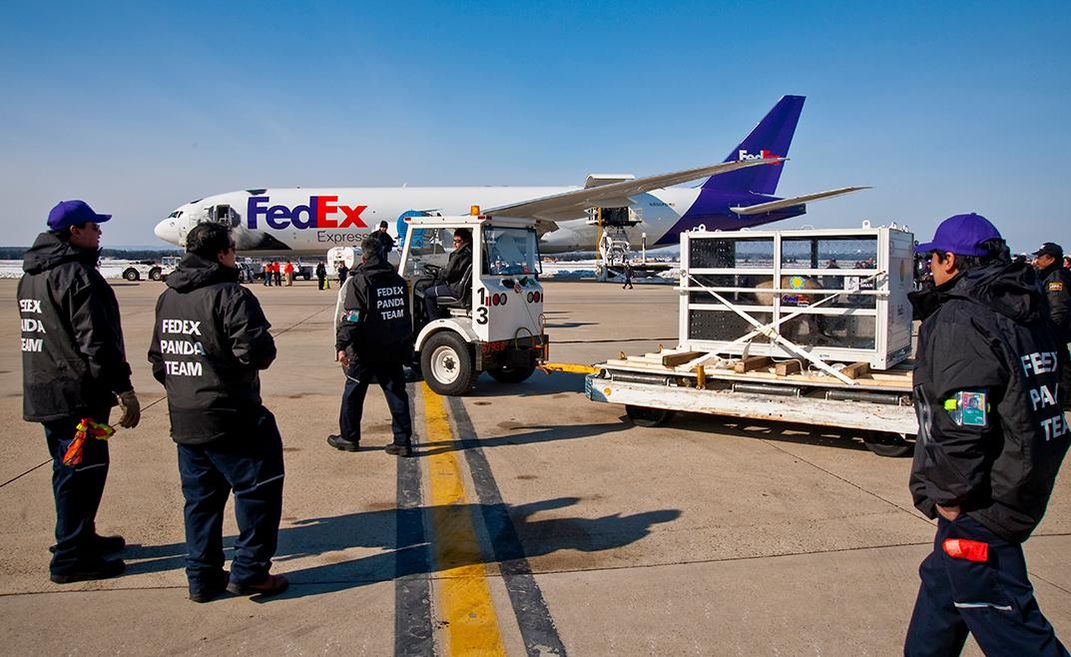
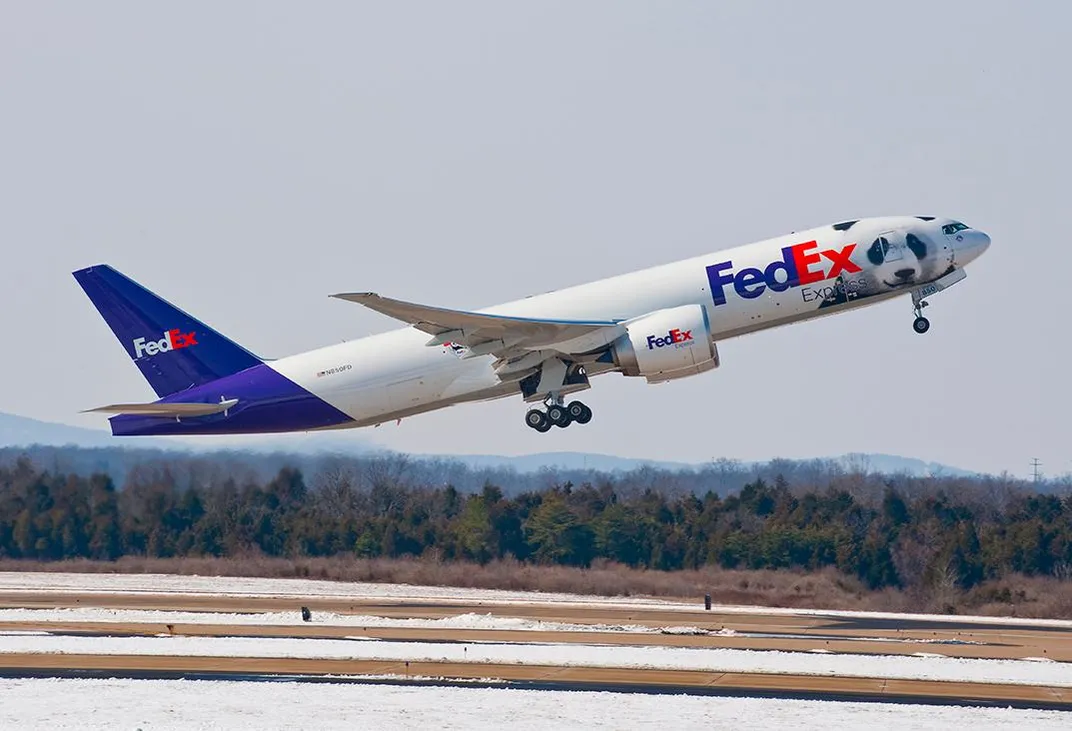
/https://tf-cmsv2-smithsonianmag-media.s3.amazonaws.com/filer/3a/c4/3ac4ac04-5589-4e7b-8145-4b59de4bb9c2/pandataishan282.jpg)

